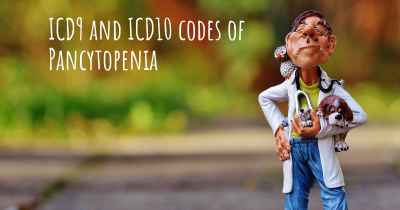Living with Pancytopenia. How to live with Pancytopenia?
Can you be happy living with Pancytopenia? What do you have to do to be happy with Pancytopenia? Living with Pancytopenia can be difficult, but you have to fight to try to be happy. Have a look at things that other people have done to be happy with Pancytopenia

Living with Pancytopenia
Pancytopenia is a medical condition characterized by a decrease in the number of red blood cells, white blood cells, and platelets in the blood. It can be caused by various factors such as bone marrow disorders, certain medications, autoimmune diseases, viral infections, and nutritional deficiencies. Living with pancytopenia can be challenging, but with proper management and lifestyle adjustments, it is possible to lead a fulfilling life.
1. Regular Medical Check-ups
Regular medical check-ups are crucial for individuals with pancytopenia. It is important to monitor blood counts and overall health to detect any changes or complications early on. Your healthcare provider will guide you on the frequency of these check-ups based on your specific condition.
2. Follow Treatment Plan
If you have an underlying cause for pancytopenia, such as a bone marrow disorder or autoimmune disease, it is essential to follow your prescribed treatment plan. This may include medications, blood transfusions, or bone marrow transplantation. Adhering to the recommended treatment can help manage symptoms and improve blood cell counts.
3. Maintain a Healthy Lifestyle
Adopting a healthy lifestyle can significantly impact your overall well-being when living with pancytopenia. This includes:
- Eating a Nutritious Diet: Consume a well-balanced diet rich in fruits, vegetables, whole grains, and lean proteins. Adequate nutrition supports the production of healthy blood cells.
- Staying Hydrated: Drink plenty of fluids, preferably water, to keep your body hydrated and support circulation.
- Getting Regular Exercise: Engage in moderate physical activity as recommended by your healthcare provider. Exercise can improve blood flow and boost overall health.
- Avoiding Smoking and Alcohol: Smoking and excessive alcohol consumption can further weaken the immune system and negatively impact blood cell production.
4. Prevent Infections
Individuals with pancytopenia are more susceptible to infections due to a weakened immune system. To minimize the risk:
- Practice Good Hygiene: Wash your hands frequently with soap and water, especially before eating or touching your face. Use hand sanitizers when soap is not available.
- Avoid Crowded Places: Limit your exposure to crowded areas, particularly during flu seasons or outbreaks of contagious diseases.
- Stay Up-to-date with Vaccinations: Consult your healthcare provider about recommended vaccinations to protect against common infections.
- Take Precautions: Wear a mask when necessary, avoid contact with individuals who are sick, and maintain a clean living environment.
5. Emotional Support
Living with pancytopenia can be emotionally challenging. It is important to seek emotional support from loved ones, friends, or support groups. Sharing your experiences, concerns, and fears with others who understand can provide comfort and help you cope better.
6. Manage Fatigue
Fatigue is a common symptom of pancytopenia. To manage fatigue:
- Prioritize Rest: Listen to your body and rest when needed. Allow yourself to take breaks throughout the day.
- Plan Activities: Plan your day to include regular periods of rest and avoid overexertion.
- Conserve Energy: Use energy-saving techniques such as sitting instead of standing, using assistive devices, and delegating tasks when possible.
- Practice Stress Management: Stress can worsen fatigue. Engage in relaxation techniques like deep breathing, meditation, or yoga to reduce stress levels.
7. Communicate with Your Healthcare Provider
Open and honest communication with your healthcare provider is crucial. Discuss any concerns, changes in symptoms, or side effects of medications promptly. They can provide guidance, adjust treatment plans if necessary, and address any questions you may have.
Living with pancytopenia requires proactive management, self-care, and support. By following these guidelines, you can optimize your health, minimize complications, and lead a fulfilling life despite the challenges posed by this condition.








